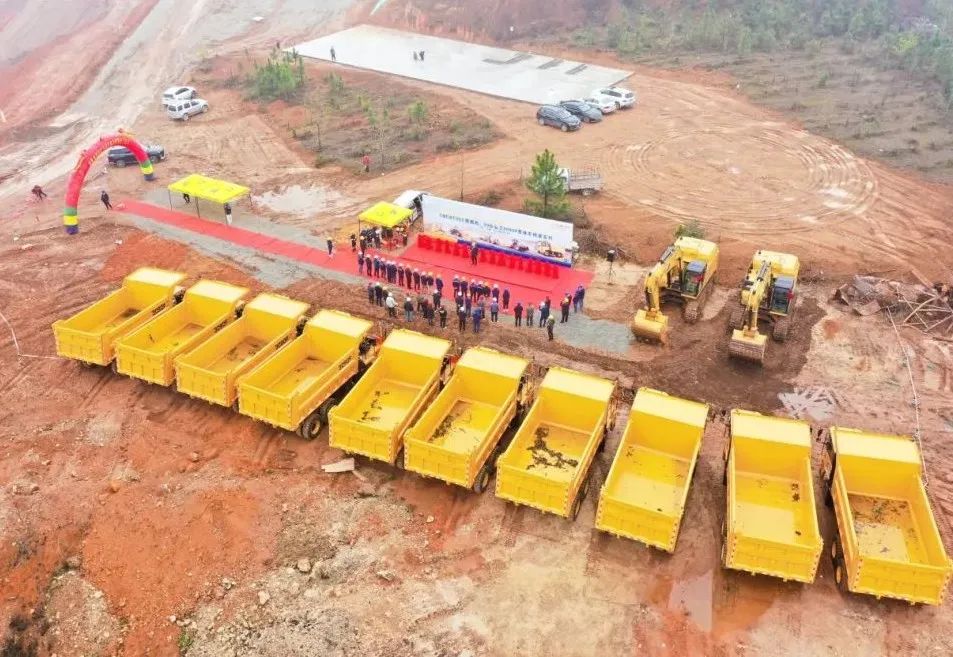How to treat infrastructure investment in 2020?
Summary
Why infrastructure investment is sluggish
(1) "Open the main gate, block the partial gate", and insufficient supporting funds. Although the government finances infrastructure by increasing the deficit rate and local special debt lines. However, at the same time, the hidden debts of local governments are also inspected and supervised, thereby blocking the channels for illegal borrowing. However, the increase in financial expenditures and special debt funds is difficult to make up for the shrinking financing of non-standard and other hidden debts, leading to the problem of insufficient infrastructure funding. (2) The inspection of hidden debts is restricted by local governments. Previously, local governments used hidden liabilities as capital through PPP, government funds, and structured products, or provided implicit guarantees for social capital. The hidden debt verification since 18 years has limited the willingness of local governments to raise debt, which is a strong constraint on infrastructure investment. (3) The industry lacks strong grasp. For some projects led by the central government, the construction progress is close to the completion target, or downstream demand has slowed. Some local government-led projects are subject to local hidden debt verification pressures, and supporting funds are limited. Therefore, since 19 years, infrastructure investment has always lacked bright spots at the industry level. (4) The caliber of statistics has changed. In recent years, the government has actively promoted the transition of the statistical system from the "Image Progress Law" to the "Financial Expenditure Law". Because the scale of the fixed asset investment under the fiscal expenditure method is relatively small compared to the image progress method, it may lead to an underestimation of the scale of infrastructure investment after 18 years.
How much infrastructure investment can spur special debt in 2020?
How much special debt is invested in infrastructure? We expect to increase the amount of special debt in 2020 to about 3.3 trillion. In accordance with the spirit of the State Council, the 1 trillion new special bonds issued in advance will be mainly used for infrastructure projects. However, it is more difficult to issue special bonds for large-scale land storage and shed reform because the matching of infrastructure projects is more difficult than land reserve and shed reform Small, it is expected that the remaining special debt quota will also be changed to land bank and shed as the main. We estimate that the proportion of special debt for infrastructure construction in 2020 may be 34% to 38%, and the amount is 1.15 to 1.26 trillion yuan.
The increase in special debt to infrastructure construction in 2020 may be about 1.5 trillion yuan. The State Council allows special debt as project capital, and expands the scope of projects and reduces the proportion of capital in some projects. However, due to the difficulty of matching projects and the relatively low proportion of social financing, the leverage of special debts on infrastructure construction is limited. We estimate that the special debt for infrastructure construction in 2020 is expected to leverage infrastructure investment of about 2.2 to 2.4 trillion yuan, and the investment amount to be realized in the year of 2020 may be about 1.5 trillion yuan, and the pull in infrastructure construction in 2020 may be 7.8% to 8.5%. .
The growth rate of infrastructure investment in 2020 may pick up modestly.
Funding sources for infrastructure investment can be divided into five types: budgetary funds, domestic loans, self-raised funds, foreign capital and other funds. We estimate that the growth rate of infrastructure financing in 2020 is 11%, which is a marked increase from 5% in 2019; the growth rate of infrastructure investment (the old caliber) in 2020 may rebound to about 8% to 9%. In terms of increase, the biggest contribution comes from the improvement of self-raised funds (mainly due to the weakening of special bond issuance and non-standard drag), followed by funds from other sources, and again within the budget. Judging from the improvement of the growth rate, the biggest improvement comes from funds from other sources and self-financing.
How to break the future of infrastructure investment?
The scale and efficiency of matching funds. First, the efficiency of using local government special debt needs to be further strengthened. For example, increasing the proportion of local special debt funds invested in infrastructure construction, and establishing a sound mechanism for local special debt issuance, approval, use and repayment. Second, increase support for supporting infrastructure funds, such as PSL targeted loans and special construction bonds. Finally, speed up the investigation and resolution of local hidden government debt.
Which areas of infrastructure construction have room for development? First of all, there may be room for growth in new infrastructure areas such as 5G and new energy. Secondly, some people's livelihood projects, such as the renovation of old communities, parking lots, cold chain logistics, etc., are also the direction of policy development. Finally, regional integration construction, such as Beijing-Tianjin-Hebei, Guangdong-Hong Kong-Macao Greater Bay Area, and the integration of the Yangtze River Delta, can also drive supporting infrastructure investment such as rail transit, expressways, and municipal engineering.
Fiscal policies and infrastructure are common means of economic counter-cyclical adjustment. With the downward pressure on the economy in 18 years, the market has a strong expectation for 19 years of infrastructure investment. In fact, the 19-year fiscal budget has raised the deficit rate to 2.8%, and the increase in the size of local special debt has also been raised to 2.15 trillion, an increase of 800 billion compared with 18 years. Since 2019, the progress of local special bond issuance and fiscal expenditure has accelerated, which has led to a rebound in infrastructure investment growth. However, from January to November 2019, the cumulative growth rate of infrastructure investment (excluding electricity) rose only slightly to 4%, and the growth rate of infrastructure investment (including electricity) under the old caliber was only 3.47%, which was relatively sluggish. So why is the investment in infrastructure still weak in the context of fiscal policy that has been clearly in force? What about infrastructure investment in 2020? This issue will analyze these issues.
1. Why is infrastructure investment sluggish?
1.1 & ldquo; Open the main door, block the partial door & rdquo ;, insufficient supporting funds
The government's policy tendency towards infrastructure financing can be simply summarized as "open the main gate and block the partial gate". On the one hand, the government finances infrastructure by increasing the deficit rate and local special debt lines. On the other hand, the local government's hidden debts have also been inspected and supervised, and non-standard financing has been tightened through new asset management regulations, blocking the local government's illegal debt raising channels. From the current point of view, the capital increase of the "Main Gate" is difficult to compensate for the "financial gate" financing contraction, which has led to insufficient infrastructure funding since 2019.
Looking back at the previous rounds of infrastructure underpinnings, they all adopted the "centrally led, local overweight, and private follow-up" model, and the supporting funds were very abundant. For example, in the first round of infrastructure construction in 2009, the government introduced a "4 trillion" fiscal stimulus policy, which led to the credit growth soaring to more than 30% in 2009 and the social financing growth rate to about 34%. The credit for infrastructure investment increased by 46% throughout the year, and the growth rate of infrastructure investment also reached a historical high of 42% in 2009.
Since 2010, domestic infrastructure growth and economic growth have both declined continuously. In February 2012, infrastructure growth fell to a low of -2.36%. Since then, infrastructure investment has begun to re-energize. At this stage, urban investment and financing has become an important supporting force for supporting infrastructure funds. In 2012, the annual net financing of urban investment bonds jumped from an average of about 300 billion yuan in the past three years to 870 billion yuan, and non-standard financing has gradually increased since 12 years. The growth rate of infrastructure investment increased from -2.36% at the beginning of 2012 to more than 20% in 2013.
The strength of the last round of infrastructure construction was 15-16 years. The growth rate of infrastructure investment rebounded slightly from 15.7% at the beginning of 16 to 21.3% at the beginning of 17th. At this stage, local governments' borrowing methods were more diversified. Non-standard, PPP, real debt, government purchases, etc., exacerbated the expansion of local government's implicit debt. Since then, with the opening of financial deleveraging in 17 years, especially the strict restrictions on non-standards imposed by the new asset management regulations, the growth rate of infrastructure has begun to fall sharply.
Although the government's fiscal policy has clearly exerted force since 2019, the scale of local special debt is only about 2.15 trillion, which is definitely not a large amount. In addition, nearly 70% of the 2.15 trillion special debt was invested in shed reform and land reserves, and only about 25% was used for infrastructure investment. In terms of general fiscal expenditure, January-November 2019 accumulated 7.7% year-on-year, an increase of less than 1 percentage point compared with the same period in 2018.
In terms of supporting funds, the net financing in the first 11 months of the non-standard contraction has shrunk by 1.6 trillion yuan. Based on 15% of investment in infrastructure, infrastructure funds have decreased by about 230 billion yuan. Urban investment bonds had a net financing of 840 billion yuan in the first 11 months of 2019, an increase of only 180 billion yuan over the same period in 2018. In addition, since 2019, the growth rate of corporate long-term loan balances has slowed down compared to 18 years, and other financing scales such as PPP have not significantly increased. Therefore, from the perspective of funding sources, the supporting funds for infrastructure investment in 2019 are insufficient, and the financial strength is difficult to completely fill the gap, resulting in a relatively sluggish.
1.2 Hidden debt verification, local government restrained
In addition to inadequate funding, another core factor restricting infrastructure is that local governments are facing hidden debt investigation and regulatory pressures, and their willingness to support them is insufficient. The concept of hidden debt was first proposed at the Politburo meeting held on July 24, 2017. The meeting proposed that “we must actively and safely resolve the accumulated local government debt risk, effectively regulate local government debt financing, and resolutely curb the increase in hidden debt. & rdquo ;. In October 18th, the 21st Century Business Herald reported that the "Opinions of the Central Committee of the Communist Party of China on Preventing and Resolving the Hidden Debt Risks of Local Governments" (Circular 27) was issued. The Opinions on the Hidden Debt Risk of Local Governments was issued (the document was not published), and the investigation of hidden debts has entered an accelerated stage.
The implicit scope of local government's implicit debt is broad. In theory, except for the formal way of raising debt, all debts repaid and guaranteed by financial funds are hidden debts, including PPPs with government credit guarantees, government funds, and government purchases. , Urban investment bonds, urban investment platform loans, etc. The past few rounds of infrastructure construction have mainly relied on the hidden debt expansion of local governments. Because many infrastructure projects are more public welfare, the cash flow is not enough to cover debt expenditures. Generally, local governments use PPP, government funds, structured products, etc. Use hidden liabilities as capital; or provide implicit guarantees for social capital. Compared with formal debt raising methods such as local debt, hidden debt has played a greater role in infrastructure investment. The hidden debt verification since 18 years has restricted the way for local governments to borrow illegally; under the principle of lifetime accountability, the willingness to raise debt has also dropped significantly, which is a strong constraint on infrastructure investment.
In June 19, the General Office of the State Council issued the “Notice on Doing a Good Job in Issuing Local Governments' Special Bonds and Supporting Project Financing”, allowing special bonds to be used as eligible major project capital. In November, the State Council issued the “Notice on Strengthening the Capital Management of Fixed Asset Investment Projects”, which lowered the capital requirements for some infrastructure projects in order to solve the problem of insufficient capital for infrastructure projects. However, since June, there are not many infrastructure projects where special debt is used as capital, and the leverage of social capital is not strong. Due to the restrictions on the use of special funds, the use of special debt funds is not flexible, and the returns on some special debt docking projects are not good, and they may still face some pressure on repayment. Therefore, the amount of special debt in some developed provinces has not been exhausted, and the limit is generally limited to the less developed central and western provinces.
1.3 The industry lacks a strong grasp
The infrastructure industry can be roughly divided into two categories: one is the projects led by the central government, such as railways, electric power and other industries. Due to the strength of the central fiscal expenditure in 19 years, funds in these areas are relatively abundant. Since 2019, investment growth has Has picked up. However, in terms of railways, the “13th Five-Year Plan” aims to achieve a national railway operating mileage of 150,000 kilometers, of which 30,000 kilometers are high-speed railways. According to the disclosure of the State Administration of Railways, the national railway operating mileage will reach 131,000 kilometers by the end of 2018 Above, high-speed rail is more than 29,000 kilometers, so the goals of the 13th Five-Year Plan are close to completion, leaving limited space for 19-20 years. In terms of electricity, the progress of its construction has a strong correlation with downstream electricity demand. Since the middle of 18 years, the growth rate of domestic power consumption has continued to decline, and the investment in power has been facing the structural transformation of clean energy. As a result, power investment has maintained a continuous negative growth for 18 years, and the decline has only narrowed in 19 years.
The other is projects led by local governments, such as highways, water conservancy, public facilities and other industries. There is much room for further growth in investment in such industries, but due to the financial constraints of local governments and insufficient supporting funds, investment growth (except for water conservancy) has declined slightly since 19 years. In addition, there are several industries in which fixed-asset investment growth has maintained rapid growth, such as eco-environment protection, gas and water supply. However, the investment scale of these industries is relatively small, and the overall stimulating effect on infrastructure investment is relatively limited. .
After the past several rounds of infrastructure investment cycles, China's domestic infrastructure is becoming more and more perfect, and infrastructure development efforts lack a strong grasp in the short term. Although some central government-led projects have relatively sufficient financial support, the construction progress is close to the completion target, or downstream demand has slowed down, and there is no need to increase investment substantially in the short term. Although some local government-led projects have some room for development, they are subject to the pressure of local hidden debt verification and their supporting funds are limited. Therefore, since 19 years, infrastructure investment has always lacked obvious bright spots at the industry level.
1.4 Statistical caliber has changed
Generally, the method for measuring infrastructure investment is to predict the source of capital for infrastructure investment in various ways and calculate the amount of infrastructure investment after adding up. However, there has always been a certain error between the source of capital for infrastructure investment and the amount of investment completed. Continue to increase. "Infrastructure completed 15 years ago-the source of capital for infrastructure investment" The error of this indicator basically fluctuates around 50 billion yuan, but it has risen sharply since 15 years and has reached 2.36 trillion in 17 years.
On the one hand, the difference between the amount of infrastructure investment completed and the source of funds is related to the upstream company's occupation of the downstream company's funds. The portion of the funds occupied (such as accounts receivable, etc.) is included in the fixed asset investment completion, but not included in the source of funds. Causes a difference between the two. On the other hand, the statistical method of fixed asset investment has previously adopted the "image progress method", but in recent years, it has gradually shifted to the "financial expenditure method". Changes in the statistical method may also depress the growth rate of infrastructure investment to some extent .
Specifically, the so-called image progress method is to calculate the amount of fixed asset investment by multiplying the percentage of physical work progress by the total budget size. The law of financial expenditure is based on financial statements and is included in the amount of fixed asset investment based on the actual financial expenditure. The difference between the two is that the image expenditure method is a subjective judgment that is not based on financial statements. It uses bottom-up reporting, which has poor data quality and is difficult to verify effectively. The financial support law is based on actual financial expenditures. Only projects that pass financial accounting can be officially included in the investment amount, and are directly reported by the enterprise. The data is more accurate and easy to verify.
Under the statistical model of the image expenditure method, due to the pressure of assessment, local governments may tend to make false reports and increase falsely, leading to a large investment scale. In addition, the actual construction progress and the availability of funds are often different (for example, arrears, advances, and review lags), which leads to the investment completion scale ahead of the funds availability scale under the image progress method, which creates a gap. Under the financial expenditure method, there is no room for the government and enterprises to misreport progress, and the amount of completed investment and the amount of funds in place tend to be unified, so the above gap may be converged.
In recent years, the government has actively promoted the transition of the statistical system from the "Image Progress Law" to the "Financial Expenditure Law". In 2013, Jincheng, Wuxi, Southeast Guizhou, and Xi'an started small-scale fiscal expenditure law trials. In 2015, Beijing and Tianjin, including 17 provinces and cities, implemented the "dual-track" old and new statistical systems. In 2017, the National Bureau of Statistics released the "Research Pilot Program for the Reform of the Statistical System for Fixed Assets Investment Statistics", which designated Hebei, Shanxi, and Gansu as pilot zones, and the remaining 17 provinces and cities carried out pilots in the province (urban area) or in some cities and counties. .
Because the scale of fixed asset investment under the fiscal expenditure method is relatively small compared to the image progress method, it may lead to a certain degree of underestimation of the size of infrastructure investment after 18 years, reflecting that the revenue growth rate of infrastructure listed companies continues to be high after 18 years Growth in investment in infrastructure. However, after 18 years, the data on infrastructure investment completion and infrastructure investment sources have not been released. We speculate that the gap between the two may be narrowing, resulting in continued downward pressure on the growth rate of infrastructure investment since 18 years.
2. The promotion of special debt on infrastructure investment in 2020
2.1 How much special debt will be invested in infrastructure in 2020?
Trillion special debts were issued. On November 27, the Ministry of Finance announced that 1. Recently, some new special debt limits of 1 trillion yuan in 2020 were issued in advance, accounting for 47% of the new special debt limit of 2.15 trillion yuan in 2019. The 1 trillion yuan of special debt increased slightly compared with 810 billion yuan at the end of 2018 (810 billion yuan of special debt and 580 billion yuan of new general debt were issued in advance at the end of 18, totaling 1.39 trillion yuan).
How much special debt will there be in 2020? It is expected to be around 3.3 trillion. Since 2015, the annual increase in the scale of special debt is 100 billion, 400 billion, 800 billion, 1.35 trillion and 2.15 trillion, an increase of 300, 4000, 5,500, and 800 billion yuan over the previous year, showing an incremental increase year by year. pattern. Under the principle of “opening the main door and blocking the door” of government debt, special debt is a more effective way to generate positive fiscal power. We expect that the amount of new special debt will increase to 3.25 ~ 3.35 trillion yuan in 2020, an increase of 1.0 ~ 1.2 trillion yuan from 2019.
The proportion of special infrastructure debt is expected to increase. From the perspective of capital investment, the proportion of special debt invested in infrastructure in 2019 is about 25%, while the proportion of funds invested in soil storage and shed reform is close to 70%. In September 2019, the State Council clearly required that the special debt funds issued in advance should not be used for land storage and real estate related fields, debt replacement and industrial projects that can be fully commercialized, focusing on transportation infrastructure, energy projects, agriculture, forestry, water conservancy, Ecological and environmental protection projects, people's livelihood services, cold chain logistics facilities, municipal and industrial park infrastructure. This means that the newly added 1 trillion yuan of special debt will be mainly used for infrastructure projects.
However, it is expected that the remaining special debt quota will be changed to land bank and shed. This is because from the perspective of project requirements, special debt is required to be used for quasi-public welfare projects, project investment and income must be matched, and matching of infrastructure projects is more difficult than land reserve and shed reform. In addition, from the perspective of the ease of bond issuance, the land reserves and shed reforms are large, corresponding to the scale of special debt issuance, better liquidity, and lower issuance rates, while the investment in many infrastructure projects is relatively low, corresponding to special debt The issue scale is smaller and the issue is more difficult.
We assume here that 60% to 70% of the special debt issued in advance of 1 trillion yuan is used for infrastructure projects (the remaining is used for other types), and the proportion of 2.25 ~ 2.35 trillion special debts invested in infrastructure may be the same as in 2019 (that is, 25%), the proportion of special debt for infrastructure construction in 2020 may be about 34% to 38%, and the amount is 1.15 to 1.26 trillion yuan.
2.2 How much infrastructure financing can special debts leverage?
Further, we consider the leverage effect of special debt as capital. Since 2019, the State Council has allowed local governments to use special debt as project capital, expand the scope of projects, and reduce the capital ratio of some infrastructure projects. Specifically:
In June, special bonds can be used as eligible major project capital. In June 2019, the State Council issued the `` Notice on Doing a Good Job in the Issuance of Special Bonds by Local Governments and Supporting Financing of Projects '', allowing special bonds to be used as eligible major project capital, mainly railways, national highways, and support Promote local highways, power supply, and gas supply projects that are major national strategies, and require the project proceeds to repay the special bonds after the principal and interest of the special income are eligible for financing. In September, the State Council expanded the scope of special bonds that can be used as project capital. The scope of using special bonds as project capital is clearly defined as major infrastructure areas that are in line with key investments. It is clear that the scale of special bond funds for project capital accounts for about 20% of the province's special debt. At the end of November, the State Council reduced the capital ratio of some infrastructure projects. On November 27, the State Council issued the "Notice on Strengthening the Capital Management of Fixed Asset Investment Projects". For port, coastal and inland navigation projects, the minimum capital ratio of the project was adjusted from 25% to 20%. In addition, some short-term infrastructure projects can appropriately reduce the minimum capital ratio of the project, but the reduction must not exceed 5 percentage points.
But from the actual project situation, first of all, there are only four special bonds as project capital, and the special bonds account for 52% of the capital on average. From the perspective of provinces, there are only two provinces, Inner Mongolia and Shandong, involving 10 projects with a total investment of 105.26 billion yuan and a total of 28.26 billion yuan in special debt (mostly issued over several years), of which the total amount issued this year was 7.87 billion yuan, accounting for 2019 In the second half of the year, the proportion of special bonds for infrastructure construction was less than 3%. The average value of special bonds in capital was 52%, and the average value of capital was as high as 80%. It can be seen that due to the profitability requirements (requiring project income to repay the special bonds after the principal and interest of the special income are eligible for financing), the capital fund does not include many special debt projects, and the capital is still mainly financed by the local finance or the project contractor. The capital ratio is high and the amount of social financing leveraged is limited.
Secondly, from the perspective of infrastructure projects where special debt is not used as capital, but as a source of funds, the proportion of project capital is high, with an average of more than 50%. We counted 167 special bonds issued from June to September 19 for infrastructure projects (excluding the previous special bonds as capital projects), with capital ratios ranging from 20% to 100% and a weighted average of 51% The proportion of special debt in the total investment of the project is between 2% and 100%, and the weighted average is 55%. This means that supporting loans for these projects are relatively low, and leverage is limited. The main reason may be that there are few projects that meet the requirements of financial institutions, and many infrastructure projects have limited returns and long project cycles, and are also related to the restriction of non-standard financing and the increased difficulty of urban investment financing.
Special debts for infrastructure projects from 1.15 to 1.26 trillion yuan in 2020 are divided into two categories: one is capital, and we assume that the proportion will be further increased from less than 3% in the second half of 2019 to 10% (required by the State Council in September) The upper limit of the proportion is 20%), then the infrastructure special debt used as capital in 2020 will be about 120 billion yuan. At the same time, it is assumed that the ratio of special debt to capital and the average ratio of capital are the same as in 19 years, 52% and 80%, respectively. The 120 billion yuan in infrastructure special debt can leverage 58 billion yuan in loans and drive about 290 billion in infrastructure investment.
The other type is not regarded as capital, assuming a proportion of 90% and an amount of about 1.1 trillion, and assuming that the proportion of special debt in total investment is equivalent to 19 years and 55%, it can leverage 1.9 ~ 2.1 trillion in infrastructure Total investment. In addition, considering that the capital and supporting loans for many projects are in place year by year, it is estimated that 2/3 of the physical work will be formed in 2020, which will drive infrastructure investment to be around 1.4 ~ 1.6 trillion.
In general, due to the difficulty of matching projects and the low proportion of social financing, the high capital ratio limits the leverage of special debt on infrastructure construction. We estimate that the special debt for infrastructure construction will be 1.15 to 1.26 trillion yuan in 2020, and it is estimated that we will leverage about 2.2 to 2.4 trillion yuan of infrastructure investment, and the investment amount will be about 1.5 trillion yuan in 2020. Under the assumption that the growth rate of infrastructure in 2019 is 4.9%, the special infrastructure debt will drive the infrastructure in 2020 by 7.8% to 8.5%.
3. Forecast of infrastructure investment in 2020
We estimate the growth rate of infrastructure investment based on infrastructure financing. The source of capital for infrastructure investment can be divided into five sources: budgetary funds, domestic loans, self-raised funds, foreign capital and other funds. In terms of the proportion of various channels, the latest 2017 data show that the highest proportion is self-raised funds (59%), followed by budget funds (16%) and domestic loans (16%), other funds and foreign capital Accounting for 9%.
3.1 Self-funding is the key
Self-raised funds are the largest source of funds for infrastructure, mainly including government funds (special bonds and land transfer fees), bonds (urban investment bonds, etc.), non-standard, PPP and self-raised funds from enterprises and institutions.
Government Fund Expenditure: Special debt helped boost government fund spending. The corresponding funding sources for government fund expenditures include government fund income, special debt income, net use of carry-over funds, and transfer to general public budget funds. In terms of government fund revenue, the proportion of land transfer funds in government fund revenues exceeded 80%. Due to the decline in the growth rate of land transfer funds, the cumulative growth rate of national government fund revenues fell from 23% in 18 years to November 19 9.5%, with the growth of real estate sales weakening, shed reform and the maintenance of housing and speculation policies, we expect government fund revenues to decline, restricting government fund expenditures. However, in the previous paragraph (Section 2.1), we estimated that the new special debt limit in 2020 may increase to about 3.3 trillion yuan, an increase of 1.15 trillion yuan from 2019, and the proportion of infrastructure is expected to increase.
We assume that government fund expenditures (invested in infrastructure) after excluding special debt dropped to 5% year-on-year in 2020, and the scale of this part of funds invested in infrastructure increased slightly by 170 billion yuan compared with 19 years. The special debt invested in infrastructure will benefit from the increase in quota and the proportion of investment in infrastructure, which will increase by about 650 billion yuan compared to 19 years. We expect that government fund spending in the infrastructure sector is expected to increase by 21% over 19 years.
Bond net financing may remain the same as 2019. Since 2019, the risk of stabilizing infrastructure and existing debt has increased, and the hidden debt supervision has been relaxed, and the reasonable refinancing needs of urban investment have been affirmed. In the same period in 18, it increased sharply by 94%. Looking forward to 2020, the pressure on the maturity of urban investment bonds is not low (nearly 2 trillion maturities), and we expect that the net financing of urban investment bonds may remain the same as in 19 years. In addition, we assume that the net financing of railway bonds and special bonds of the Development and Reform Commission is the same as in 19 years.
PPP projects remain stable. The scale of new investment in the implementation phase of the PPP project in 19 years was close to 3 trillion yuan, of which the proportion of investment in the infrastructure sector was stable at 69%. We estimate that the growth rate of PPP new projects in 2020, the proportion of projects and the proportion of capital will be the same as in 19, and the private capital investment scale of PPP in 2020 will be about 830 billion yuan.
Non-standard drag on marginal improvement, but may still increase negatively. In addition to the above projects, the self-financing part also includes non-standard and self-financing funds from enterprises and institutions. The total amount of these two parts in 2014-2015 may be about 3 trillion per year, but it will be reduced to 20,000 per year by 2018 ~ 2019. Within 100 million yuan, the main reason is the drag on non-standards. Due to financial supervision and the control of local government's hidden debts, the new trusts and new entrusted loans invested in infrastructure in 18 and 19 were -280 billion and -180 billion yuan respectively. Taking into account the management and control of non-standard investment in real estate, we expect 2020 New non-standard funds invested in infrastructure are expected to continue to decline and narrow. Funds raised by enterprises and institutions may remain stable.
3.2 Limited space within the budget, infrastructure loans or small improvements
There is limited space for funds in the budget invested in infrastructure. Constrained by the budget deficit rate and the reduction of taxes and fees, it is difficult for the growth rate of public financial expenditure to increase significantly. From January to November of 19, public financial expenditure increased by 7.7% year-on-year, a slight increase of 0.9 percentage points from the same period in 18 years. We assume 2019 The growth rate of fiscal expenditure in ~ 2020 will be 9.6%. Since 2011, the infrastructure funds in the budget accounted for a steady increase in public financial expenditure. In 2017, this proportion reached 11.8%. The Politburo meeting stressed the need to strengthen infrastructure construction. We expect the proportion of fiscal investment to infrastructure to be further increased to 12.5%. In 2020, the budgeted funds in infrastructure funding sources may increase to 3.3 trillion yuan, an increase of 10% year-on-year (14% in 19), and the financing amount may increase by 0.29 trillion compared with 19 years.
Domestic infrastructure loans may improve slightly, but it is difficult to make a greater contribution. New credit in January-November 2019 increased by 3.9% year-on-year, which is a significant decline from nearly 20% in the whole of 2018. We assume that the growth rate of new credit in 19-20 will remain at about 4%. Judging from the proportion of domestic loans invested in infrastructure, domestic loans in the source of infrastructure funds in 17 years accounted for 17% of new credit in the year, a slight increase of 0.6 percentage points from 16 years. From the statements of listed banks, 18 and 19 years In the first half of the year, the proportion of 29 listed banks' loans to the infrastructure industry was 17.8% and 17.5%, down 0.3 and 0.5 percentage points year-on-year respectively.
We assume that the proportion of domestic loans invested in infrastructure in 2020 may increase to 17.5% of the new credit in that year, a slight increase from 19 years. Then, infrastructure loans in 2020 will be about 3.06 trillion yuan, a year-on-year increase of 7% (19% 4%). ), The amount of financing increased slightly by 200 billion yuan compared with 19 years.
3.3 Expected moderate pick-up in infrastructure investment and financing growth in 2020
We assume that the increase in the use of foreign capital in infrastructure funding sources in 2020 is the same as in 2017, and the growth rate of other funding sources is the average of the past six years. Then we estimate that the growth rate of infrastructure financing in 2020 is 11%, which is a marked increase from 5% in 2019 . At the same time, assuming that the gap between infrastructure financing and infrastructure investment in 19 and 20 is narrowed slightly compared to 17 years, we predict that the growth rate of infrastructure investment (old caliber) in 2020 may rise to about 8% to 9%.
In terms of increase, the biggest contribution comes from the improvement of self-raised funds, mainly due to the issuance of special debt, and the reduction of non-standard drag, followed by funds from other sources, and again within the budget. Judging from the improvement of the growth rate, the biggest improvement comes from funds from other sources and self-financing.
4. How to break the future of infrastructure investment?
4.1 The scale and efficiency of supporting funds
First, the efficiency of using local government special debt needs to be further strengthened. On the one hand, increase the proportion of local special debt funds invested in infrastructure, especially increase the proportion of special debt funds used as project capital, in order to increase the effect of leveraging social funds. On the other hand, to improve the information disclosure and debt repayment mechanism of special debts, for some projects with long income cycles, it is possible to consider increasing the issuance period of special debts to make the liabilities and income more matched. In the long run, it is most important to establish a comprehensive mechanism for the issuance, approval, use and repayment of special local debt.
Second, increase support for supporting infrastructure funds. In the context of hidden debt verification and non-standard financing contraction, infrastructure will still face the constraints of insufficient supporting funds in the future, and the efforts to open the "front door" will need to be greater. In addition to expanding the new quota for local special debt, it can also provide additional supporting funds for infrastructure investment through PSL targeted loans, special construction bonds or special construction funds.
Finally, speed up the investigation and resolution of local hidden government debt. Inadequate local government debt-raising capacity and willingness are the most important factors restricting infrastructure investment. Speeding up the investigation of hidden debts by local governments and arranging a resolution mechanism as soon as possible can help local governments to a certain extent. A recent 21st Century Business Herald reported that the regulatory authorities have allowed AMC to acquire the due debt of financing platform companies, which has contributed to the debt risk of some urban investment platforms and is an important measure to promote the resolution of hidden debts by local governments.
4.2 In what areas of infrastructure or is there room for development?
First of all, there may be room for growth in new infrastructure areas such as 5G and new energy. In the 2018 Central Economic Work Conference, 5G, artificial intelligence, industrial Internet, and the Internet of Things were defined as `` new infrastructure construction '' and listed as one of the key tasks in 2019. With the implementation of the 5G license in mid-1919, the promotion of 5G commercialization will accelerate, and related investments (such as 5G base stations, transmission networks, etc.) in 2020 may have some room for growth. In addition, in recent years, the investment structure of the power sector has been adjusted, and the proportion of new energy sources such as photovoltaics and wind power has increased. The current capacity of the power grid is still insufficient, and the investment in new energy power stations and supporting power grids may have room for growth in the future.
Second, some people's livelihood projects, such as old reforms, parking lots, and cold chain logistics, are also the direction of policy development. In terms of old reforms, the "Notice on Doing a Good Job in the Renovation of Old Communities in 2019" issued in April 2019 clearly stated that it is necessary to accelerate the renovation of old communities, including infrastructure reconstruction, upgrade of supporting facilities, and water, electricity, and transportation. The construction of related facilities such as sewage and sewage treatment may be an important starting point for investment in public facilities management. The Central Economic Work Conference in December also clearly stated that "strengthening the construction of municipal pipeline networks, urban parking lots, cold-chain logistics, etc., and speeding up the construction of rural roads, information, water conservancy and other facilities". Among them, the construction of parking lots will help boost the demand for automobiles, and cold chain logistics will help boost consumption in third- and fourth-tier cities and rural areas. It will also have positive significance for economic growth and expansion of demand.
Finally, regional integration is also an important growth point of infrastructure. In December 2019, the Outline of the Yangtze River Delta Regional Integration Development Plan was promulgated, and the construction of the Yangtze River Delta urban agglomeration and regional integration entered an accelerated phase. The 2019 Economic Work Conference clearly stated that `` Promote the coordinated development of Beijing, Tianjin and Hebei, the integrated development of the Yangtze River Delta, and the construction of the Guangdong-Hong Kong-Macao Greater Bay Area .... & rdquo ;. This means that regional integrated construction and supporting rail transit, expressways, and municipal engineering may also be important drivers for future infrastructure growth.
Author: Bo peishan jiang







